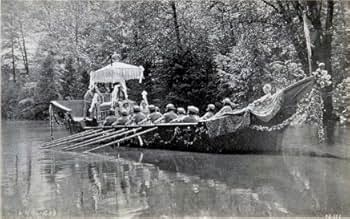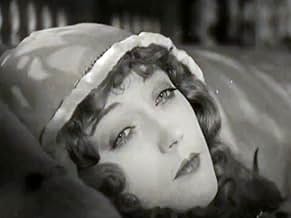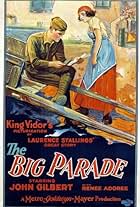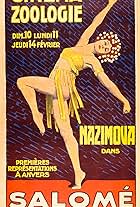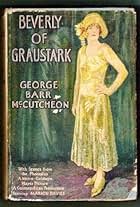When Knighthood Was in Flower
- 1922
- 2h
IMDb RATING
6.6/10
1.1K
YOUR RATING
Mary Tudor, sister of England's Henry VIII, causes a stir by falling in love with a guardsman below her class.Mary Tudor, sister of England's Henry VIII, causes a stir by falling in love with a guardsman below her class.Mary Tudor, sister of England's Henry VIII, causes a stir by falling in love with a guardsman below her class.
- Awards
- 1 win
William Powell
- Francis, Duc d' Angoulême
- (as William H. Powell)
Charles K. Gerrard
- Sir Adam Judson
- (as Charles Gerard)
- Director
- Writers
- All cast & crew
- Production, box office & more at IMDbPro
Storyline
Did you know
- TriviaMarion Davies's gowns were the exact reproductions of those worn by Mary Tudor.
- GoofsFrancis was Louis's son-in-law and first cousin once removed, not his nephew.
- Quotes
Mary Tudor: Jane, Jane, how lucky you are not to be a Princess... and for sale!
- ConnectionsEdited into American Experience: Citizen Hearst: Part 2 (2021)
- SoundtracksThe Marion Davies March
Music by Victor Herbert
Featured review
I haven't looked at this in twenty years or so, and my memory was dim, but at the time I thought it was good but not great. Looking at the dvd of the Ben Model-Library of Congress-Jack Theakson-Steven Stanchfield restoration, I am agog at the clarity of the images, the beauty of the tints, and the care taken in the hand-coloring of the torches in the big chase at the end, the stupendous sets by Joseph Urban (who, Lara Gabrielle Fowler notes in the well-written booklet that accompanies the set, actually designed palaces in Europe) and the sumptuous clothing. Ben has added a handsome organ score based on the original offering at the Criterion in Manhattan. Like the original movie, nothing has been omitted to make this less than a landmark restoration.
The story is one of those melodramas of romantic piffle in costume that have long been popular. Marion Davies is Mary Tudor, young sister of Henry VIII, played by a suit seen in a Holbein picture, into which Lyn Harding has been stuffed. He is interested in marrying Marion to whichever ruler will serve his dynastic purposes, but she wants love, and settles on Forrest Stanley. When her engagement to the decrepit Louis XII is announced, she and Stanley try to flee to America; they are caught and Stanley is saved from a cheap and chippy chopper only by Marion's promise to marry Louis and not make a fuss. Unfortunately, the marriage takes its toll on the king, and the new king, played by William Powell, would have his way with her. As Tod Slaughter used to ask, will Heaven protect the working girl?
This sort of suffering-in-ermine story does not appeal to me, as I have made apparent in many another review. Even worse, for my taste, is the fact that the actors and their performances get lost in the immense sets and sumptuous costumes, so that it sometimes seemed that I was viewing a series of Flemish paintings -- not in the least aided by Robert Vignola's well-this-composition-worked-in-the-last-thirty-setups staging. It was almost an hour into the film, when Marion and Forrest are hiding out at an inn, that some of the clothing comes off and we get to see some acting. Otherwise, the only human moments seem to be the rare close-ups of the actors -- usually Marion in some immense pearl-studded miter -- lending more of an air of a tableau vivante, or even a good waxworks than a fillum.
I know that there is a large contingent of fans who will enjoy this movie just for those things which seem to me a distraction from good story-telling. These are the matters of likes and dislikes that we shrug our shoulders at. It doesn't lessen the amount of work and, indeed, the achievement of the restoration. The amount of labor and cooperation make it clear that, yes, we fans of these old movies can achieve something worthwhile. I can only hope that those of us who like this sort of thing will like it very much, and we can do more of these. Anyone for Dorothy Gish?
The story is one of those melodramas of romantic piffle in costume that have long been popular. Marion Davies is Mary Tudor, young sister of Henry VIII, played by a suit seen in a Holbein picture, into which Lyn Harding has been stuffed. He is interested in marrying Marion to whichever ruler will serve his dynastic purposes, but she wants love, and settles on Forrest Stanley. When her engagement to the decrepit Louis XII is announced, she and Stanley try to flee to America; they are caught and Stanley is saved from a cheap and chippy chopper only by Marion's promise to marry Louis and not make a fuss. Unfortunately, the marriage takes its toll on the king, and the new king, played by William Powell, would have his way with her. As Tod Slaughter used to ask, will Heaven protect the working girl?
This sort of suffering-in-ermine story does not appeal to me, as I have made apparent in many another review. Even worse, for my taste, is the fact that the actors and their performances get lost in the immense sets and sumptuous costumes, so that it sometimes seemed that I was viewing a series of Flemish paintings -- not in the least aided by Robert Vignola's well-this-composition-worked-in-the-last-thirty-setups staging. It was almost an hour into the film, when Marion and Forrest are hiding out at an inn, that some of the clothing comes off and we get to see some acting. Otherwise, the only human moments seem to be the rare close-ups of the actors -- usually Marion in some immense pearl-studded miter -- lending more of an air of a tableau vivante, or even a good waxworks than a fillum.
I know that there is a large contingent of fans who will enjoy this movie just for those things which seem to me a distraction from good story-telling. These are the matters of likes and dislikes that we shrug our shoulders at. It doesn't lessen the amount of work and, indeed, the achievement of the restoration. The amount of labor and cooperation make it clear that, yes, we fans of these old movies can achieve something worthwhile. I can only hope that those of us who like this sort of thing will like it very much, and we can do more of these. Anyone for Dorothy Gish?
Details
- Release date
- Country of origin
- Languages
- Also known as
- Då ridderskapet stod i blom
- Filming locations
- Production company
- See more company credits at IMDbPro
Box office
- Budget
- $1,500,000 (estimated)
- Runtime2 hours
- Color
- Sound mix
- Aspect ratio
- 1.33 : 1
Contribute to this page
Suggest an edit or add missing content

Top Gap
By what name was When Knighthood Was in Flower (1922) officially released in Canada in English?
Answer

